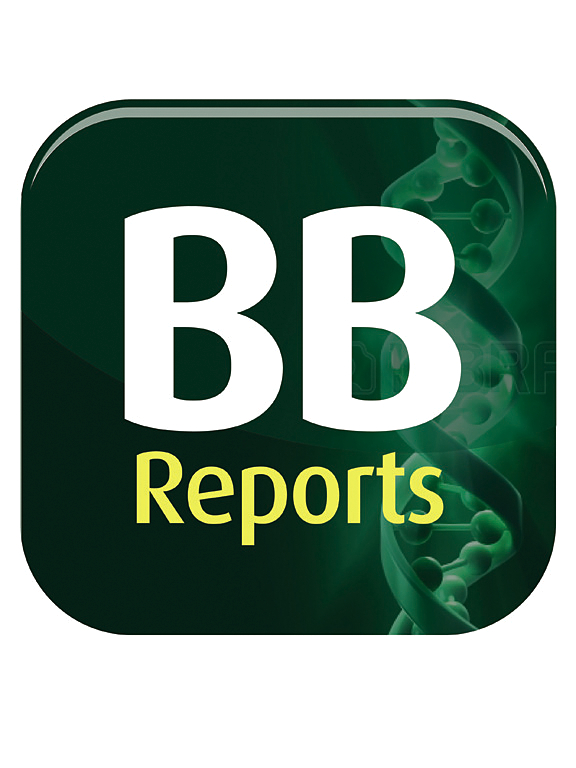线粒体基因组源性LncRNA LIPCAR在结直肠癌中表达改变的临床意义
IF 2.3
Q3 BIOCHEMISTRY & MOLECULAR BIOLOGY
引用次数: 0
摘要
背景:结直肠癌(CRC)的患病率和死亡率呈上升趋势;因此,了解其分子病理生理是确定可靠的诊断和治疗标记物的必要条件。一些研究证实了这样一个事实,即包括癌症在内的各种疾病的发生和发展都受到线粒体转录物(如线粒体基因组编码的lncrna)失调的显著影响。本研究首次探讨了LIPCAR在结直肠癌中的表达谱及其与临床病理参数的相关性。方法本工作共获得40对结直肠癌组织,包括40例肿瘤样本和40例邻近非肿瘤样本。采用SYBR绿色技术实时PCR分析LIPCAR在结直肠癌患者中的表达谱。结果与邻近非肿瘤组织相比,肿瘤组织样本中LIPCAR的表达明显下调(p值<; 0.05)。此外,患者的临床数据与LIPCAR表达降低之间没有明显关系。受试者工作特征(ROC)曲线分析显示,LIPCAR的曲线下面积(AUC)为0.75 (p值<; 0.0001),灵敏度为87.5%,特异性为57.5%,截止值为0.094。结论LIPCAR表达的显著下调提示其在结直肠癌的发病机制中起重要作用,可能具有肿瘤抑制作用。此外,LIPCAR可能作为结直肠癌患者的临床生物标志物。然而,这一假设需要通过体外和体内的全面功能研究进一步验证。本文章由计算机程序翻译,如有差异,请以英文原文为准。
Clinical significance of altered expression of mitochondrial genome-derived LncRNA LIPCAR in colorectal cancer
Background
The prevalence and mortality of colorectal cancer (CRC) are rising; therefore, understanding its molecular pathophysiology is necessary for identifying reliable diagnostic and therapeutic markers. Several studies corroborate the fact that the initiation and progression of various diseases, including cancers, are significantly influenced by the dysregulation of mitochondrial transcripts, such as lncRNAs encoded by the mitochondrial genome. This study is the first to examine the expression profile of LIPCAR in CRC and its correlation with clinicopathological parameters.
Methods
In this work, 40 pairs of CRC tissues were obtained, including 40 tumor samples and 40 adjacent non-tumor samples. The SYBR green technique was applied in real-time PCR to analyze the expression profile of LIPCAR in CRC patients.
Results
The findings indicated a significant downregulation of LIPCAR in tumor tissue samples compared to adjacent non-tumoral tissues (p-value<.05). Furthermore, no significant relationship between the patients' clinical data and decreased LIPCAR expression was found. Receiver Operating Characteristic (ROC) curve analysis revealed that LIPCAR had an area under the curve (AUC) of .75 (p-value <.0001), with a sensitivity of 87.5 % and a specificity of 57.5 % at a cutoff value of .094.
Conclusion
The marked downregulation of LIPCAR expression suggests its critical involvement in the pathogenesis of CRC, potentially functioning as a tumor suppressor. Furthermore, LIPCAR may serve as a clinical biomarker for CRC patients. However, this hypothesis necessitates further validation through comprehensive functional studies conducted both in vitro and in vivo.
求助全文
通过发布文献求助,成功后即可免费获取论文全文。
去求助
来源期刊

Biochemistry and Biophysics Reports
Biochemistry, Genetics and Molecular Biology-Biophysics
CiteScore
4.60
自引率
0.00%
发文量
191
审稿时长
59 days
期刊介绍:
Open access, online only, peer-reviewed international journal in the Life Sciences, established in 2014 Biochemistry and Biophysics Reports (BB Reports) publishes original research in all aspects of Biochemistry, Biophysics and related areas like Molecular and Cell Biology. BB Reports welcomes solid though more preliminary, descriptive and small scale results if they have the potential to stimulate and/or contribute to future research, leading to new insights or hypothesis. Primary criteria for acceptance is that the work is original, scientifically and technically sound and provides valuable knowledge to life sciences research. We strongly believe all results deserve to be published and documented for the advancement of science. BB Reports specifically appreciates receiving reports on: Negative results, Replication studies, Reanalysis of previous datasets.
 求助内容:
求助内容: 应助结果提醒方式:
应助结果提醒方式:


